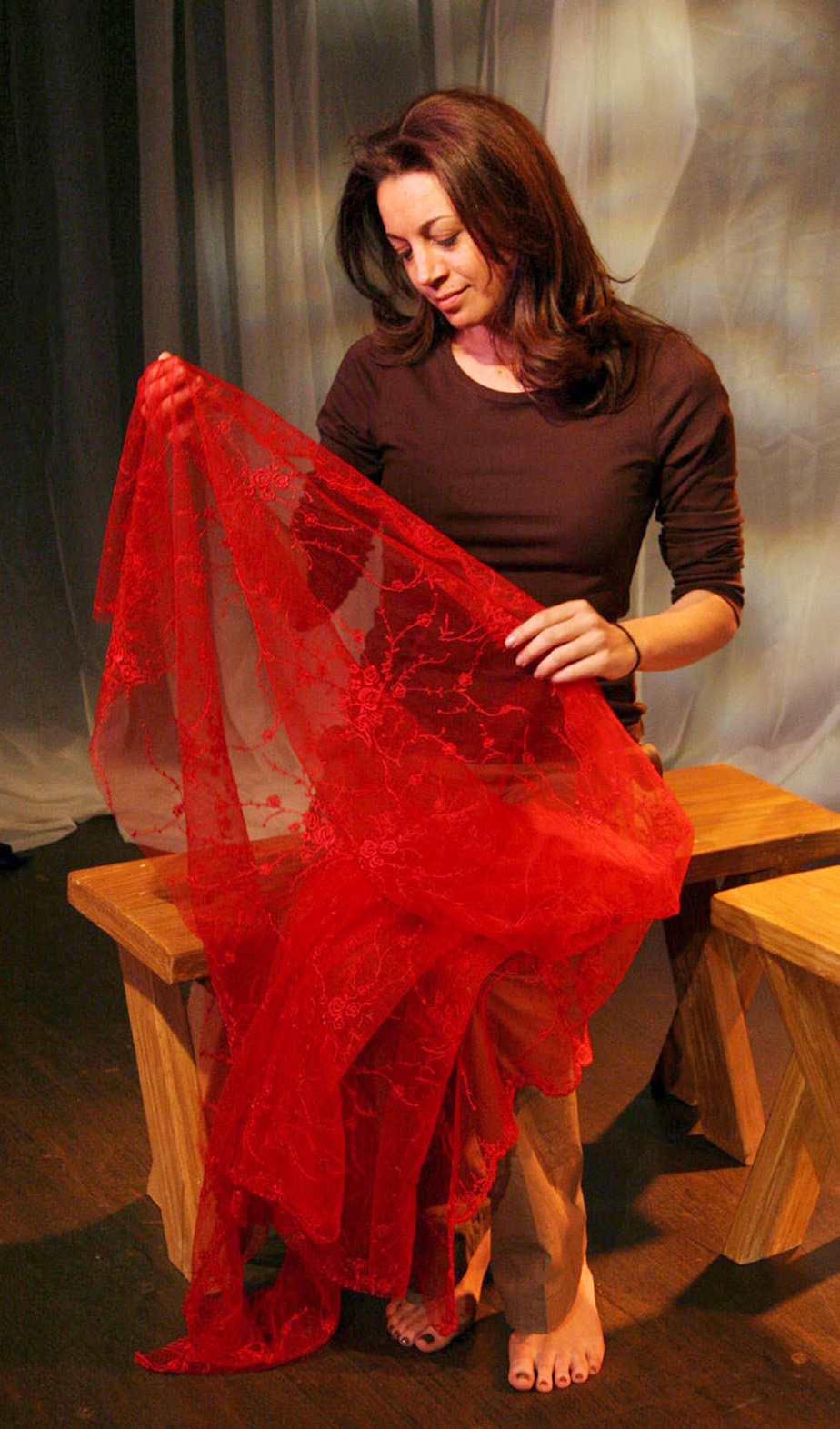“No Word in Guyanese for Me”
Sidewalk Studio Theatre
Through June 12
![]()
![]()
![]()
![]()
It’s more than a bit impressive that one stage, a couple of scarves and some lights can deliver such a strong production.
In “No Word in Guyanese for Me,” alumna Anna Khaja takes her character, Hanna, through the difficulties of a gay Muslim who resides in New York after the Sept. 11 attacks.
The play begins with 5-year-old Hanna in Guyana, a state on the northern coast of South America. From the beginning, it is clear that Khaja’s talent will flawlessly capture this emotionally tangled story.
Khaja walks on stage as a troubled young woman, looking through a photo album from her youth. Her heavy gloom and deep thoughts are almost palpable. Recounting her tale from when she grew up in Guyana, she transforms into 5-year-old Hanna.
It does not take much effort to envision Khaja, a grown woman, as a little girl excitedly clapping her hands on stage.
While it may seem obvious that actors must embody their characters through facial expressions and body movements, Khaja truly understands her craft and uses these skills to seamlessly transform into a wide-eyed, innocent 5-year-old. With a breathy, excited voice, she tells the audience how she loves playing with her brother in the lush environment that is Guyana.
Though it is a one-woman play, it is not a one-character play.
Without skipping a beat, Hanna converses with her brother, a droopy-eyed character with a low, teasing voice that brothers seem to always use on their little sisters. Once again, Khaja’s talent shines through ““ the physical presence of a young man seems to emerge on stage.
The story line, however, does not stay in Guyana for long. Following the death of her birth mother, which leads Hanna to live with her aunt, and the loss of her father’s job, her family moves to New York.
In her youth, Hanna learns of the importance of religion and culture. As a Guyanese Muslim, she is instructed to wear a hijab, a traditional head covering.
These scarves play a significant role, as different-colored hijabs are given to Hanna at various times in her life. In the end, a scarf comes to represent the new love of her life, who wholly accepts her despite other religious and cultural groups telling her that no part of her is acceptable.
While there may not be many props on stage besides these colorful scarves and a few other knickknacks, the play is visually stimulating. Every detail is accounted for ““ from the lights that dim to a low red to set the scene of a photography developing studio to the sound of water splashing when young Hanna playfully kicks her legs in a river in Guyana.
The seamless execution of the lighting and sound work to move the audience past the stage and into Hanna’s world. It does not take much effort for the audience to imagine Hanna dancing around with her new love, though realistically it is only Khaja twirling around on stage with a scarf.
As Hanna struggles to come to a realization of her sexuality and then work to keep ties with her family once this secret is revealed, the audience is put through an emotional rollercoaster.
Though there are no intermissions, the usual claustrophobic feeling of the need for a break does not occur. The plot works to pull at the audience’s heartstrings so that emotionally connecting with Hanna is inevitable.
While “No Word in Guyanese for Me” follows a culture, sexual identity and religion that some may not be familiar with, it is a coming-of-age story that most can identify with.
Email Lee at jlee1@media.ucla.edu.
